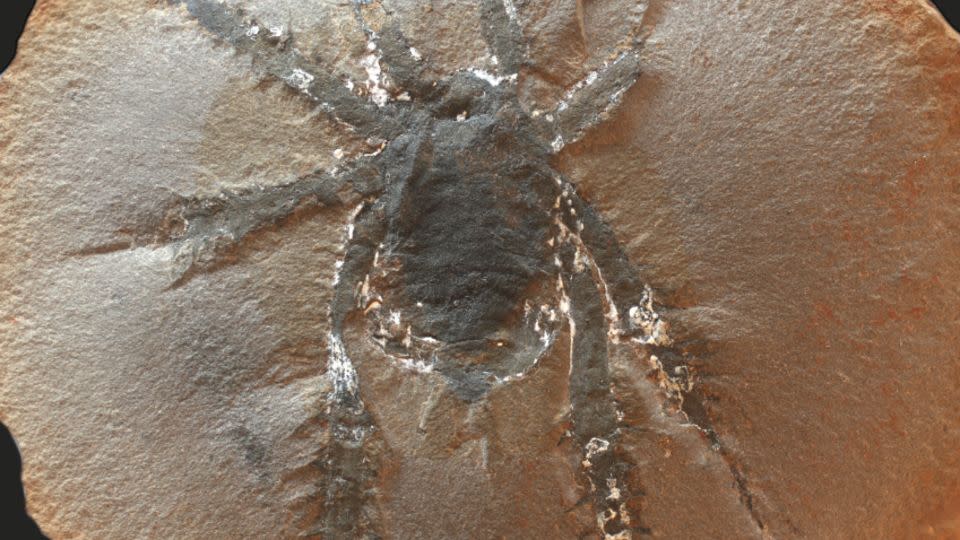Subscribe to CNN’s Wonder Theory science newsletter. Explore the universe with news about exciting discoveries, scientific advances and more.
The idea of unexpectedly coming face to face with an arachnid creature is enough to fill any arachnophobe with dread, let alone encountering a human with large spiny legs.
But that’s exactly what was roaming around northeastern Illinois at the end of the Carboniferous period, about 300 to 320 million years ago, according to a study published Friday in the Journal of Paleontology.
The newly discovered long-extinct species is described by the study authors as a “large spider-like arachnid” with “distinctive large spikes on its legs.” They were unable to assign the creature to any known order of arachnids because the specimen lacked the mouthparts that scientists use to classify them.
“You see sort of spiky legs in some arachnids, but we’ve never seen any of these big spines all the way through, at least not on the first legs. It’s very, very surprising,” Dr. Jason Dunlop, curator of arachnids and millipedes at the Berlin Museum of Natural History and co-author of the study, told CNN on Friday.
“We looked at it twice and said, ‘What are we looking at here?’
Fossil preparation expert Bob Masek first discovered this specimen in the 1980s in fossil deposits preserved in Illinois’ Mazon Creek Lagerstätte. (The German word is a term paleontologists use to describe an exceptional site with many perfectly preserved fossils.) However, it was not until 2023 that it became clear that the specimen was a new species, and fossil collector David Douglas, who purchased it from Masek, gave it for research.
The researchers then examined and photographed the fossils using a camera attached to a microscope.
They found that the creature was “clearly something very different from any previously described arachnid,” with spiny legs reminiscent of some modern harvestman arachnids, but with a different body type.


The creature likely used its spines for defensive purposes, not to attack other animals, similar to hedgehog spines today, Dunlop said.
“This means that when something tries to bite it, it catches the spikes in its mouth. … We’re talking about processing time, which means if you want to eat something spiky, it’s going to take longer because you have to break the thorns or bite off pieces that don’t have thorns on them,” he added.
“We can speculate that there were scorpions and other spiders around,” Dunlop said, as well as primitive lizards or large amphibians that preyed on these arachnids, but it’s impossible to know for sure.
Without a mouthpart, researchers can’t pinpoint its closest relative, but they believe it may belong to a wider group including spiders, whip spiders and whip scorpions.
So far, paleontologists have only found the species in North America, but it may “turn up somewhere else” in northern Europe, Dunlop said.
“A vast area across much of modern Europe and North America was probably a kind of giant rainforest, and wherever coal is found today, you have a reasonable chance of finding these fossils (of arachnids, plants, and insects).” he added.
Eventually, the researchers named the species Douglassarachne acanthopoda. The genus name honors the Douglas family, who donated a specimen to Chicago’s Field Museum of Natural History, and the species name refers to the spines that make this arachnid so distinctive.
For more CNN news and newsletters, create an account at CNN.com